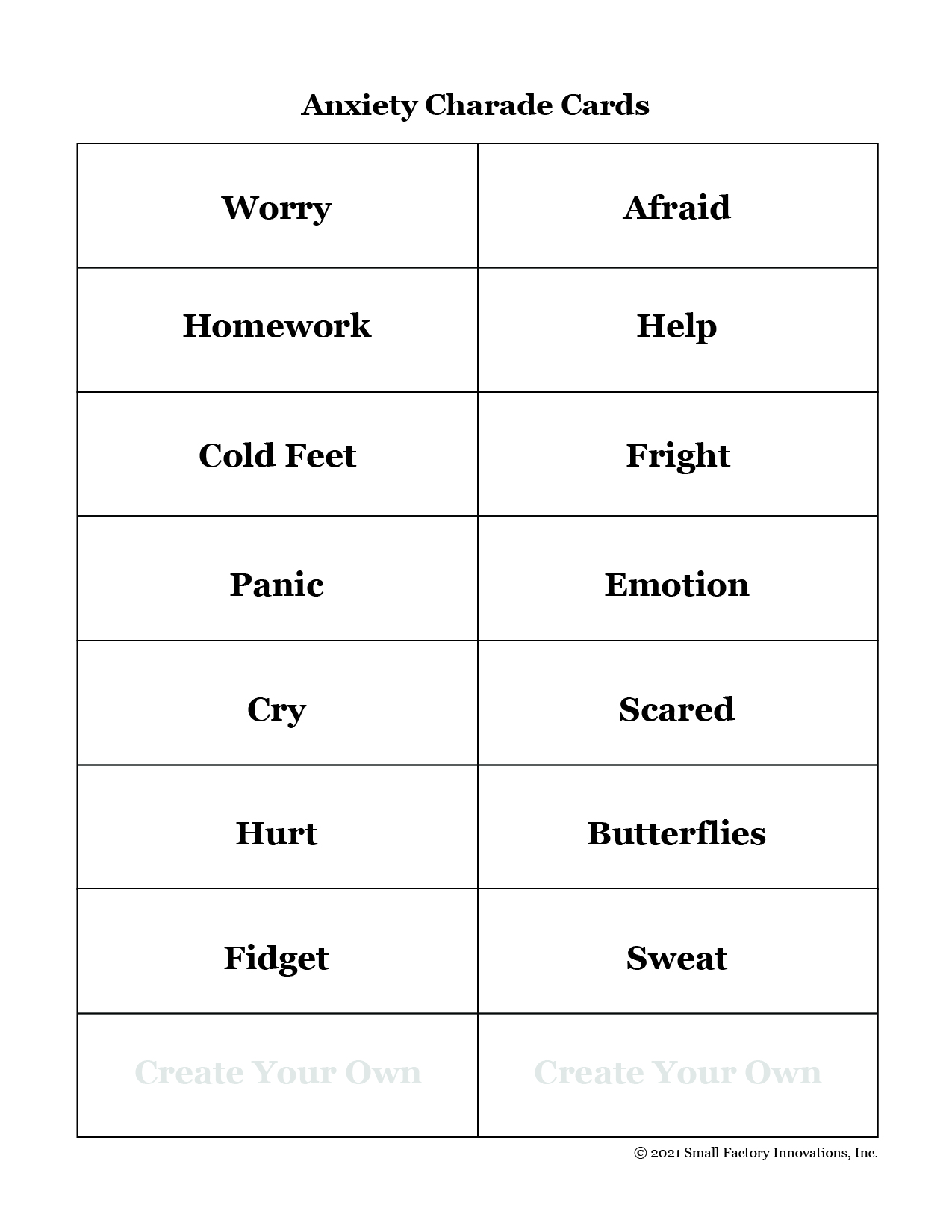
Improve life outcomes
Jumpstart: Identifying Anxiety - Universal
Foundational
CASEL Competency Focus: Self-Awareness
Time: 20-30 minutes
Materials: Timer, Charade Cards (Included), Chart Paper, Writing Utensils, Timer/Clock
Objectives:
1. Recognize signs of anxiety in others (such as facial expressions, body language and/or vocabulary or tone used).
2. Identify possible triggers that may cause peers/adults to feel anxious.
Speaking and Listening
Language Writing
Definitions of Key Terms:
- Anxiety: extreme constant fear about everyday situations
- Anxious: experience of being very worried/fearful of the outcome of a situation
- Trigger: an event that causes something to happen
Lesson Procedures
Introduction: Anxiety is an emotion we all feel. Some of us experience the feeling of being anxious more than others. In this lesson, discuss with students the signs to look for in a person when they are experiencing anxiety. These signs include; change in facial expression, generally don’t see a smile, rapid heart rate, may become withdrawn or more talkative, body language; crossed arms, fidgeting, etc. Share with students anxiety is similar to being worried, but is a more intense, drawn out feeling. Brainstorm words and phrases associated with anxiety. Create a list of student responses. Examples include; worry, fear, stress, butterflies in your stomach, etc.
Next, introduce possible situations that trigger anxiety. Using the definition above, explain to students what a trigger is and how it can make us feel anxious. Create another list of possible situations that can trigger anxiety. Examples include; school projects, going to the doctor, meeting new people, etc. Complete the activities below.
Game Time: Charades!
Nothing can cause our heart to race like trying to beat the clock. In this game, students will use the situation cards included in this lesson to act out words and phrases associated with anxiety. Divide class into two teams or small groups. Students will take turns acting out the clues and guessing. For each round set the timer for 45 seconds. The team with the most cards at the end of the round wins! Consider having secondary students create their own cards.
Application: That Makes Sense!
Just knowing everyone experiences anxiety isn’t enough. Learning ways to cope with anxiety is equally important. In this activity, students will use their five senses to practice mindfulness and reduce feelings of anxiety. You can decide if you would like students to record their individual responses or just hold them in their heads. Instruct students to sit quietly and focus on their senses and the environment around them. First, ask students to name/think of five things they can see. Pause to allow students the time to think. Repeat the process asking the following; Name four things you hear, three things you can feel (touch), two things you can smell and one thing you can taste. When completed, ask students to notice how their bodies are feeling. Do they have a different feeling now? What are they thinking? What change (if any) did they notice. Inform students this is just one activity to help handle feelings of anxiety.
Try it out!
Create an anchor chart with students listing a number of strategies to use when feeling anxious. Hang the chart in the room for students to refer to throughout the day. Examples include; five senses activity, deep breathing, yoga, meditation, counting backwards, etc.
